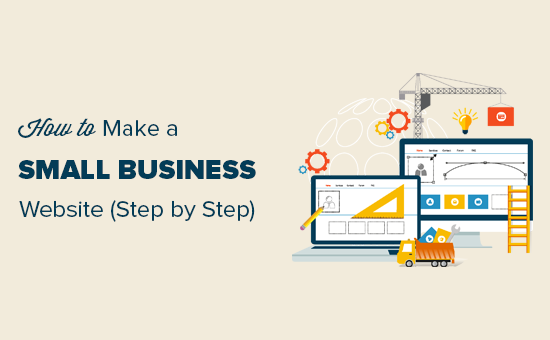Introduction: In today’s digital age, having a strong online presence is essential for businesses of all sizes. A well-designed and functional website serves as the cornerstone of your digital marketing strategy, allowing you to showcase your products or services, engage with customers, and drive sales. In this comprehensive guide, we will walk you through the step-by-step process of setting up a business website, from planning and design to launch and maintenance.
Step 1: Define Your Objectives Before diving into the technical aspects of building a website, it’s essential to clearly define your objectives. Ask yourself what you hope to achieve with your website. Are you looking to increase brand awareness, generate leads, or sell products online? Defining your goals will help guide the design and functionality of your website.
Step 2: Choose a Domain Name Your domain name is the web address where visitors will find your website. Choose a domain name that is memorable, relevant to your business, and easy to spell. You can register a domain name through a domain registrar or web hosting provider.
Step 3: Select a Web Hosting Provider Web hosting is the service that stores your website files and makes them accessible to visitors on the internet. Choose a reliable web hosting provider that offers fast loading times, uptime guarantees, and good customer support. Consider factors such as bandwidth, storage space, and scalability when selecting a hosting plan.
Step 4: Choose a Content Management System (CMS) A content management system (CMS) is a software platform that allows you to create, manage, and publish content on your website without needing to know coding languages like HTML or CSS. Popular CMS options include WordPress, Joomla, and Drupal. Choose a CMS that aligns with your technical skills and website requirements.
Step 5: Design Your Website Once you have chosen a CMS, it’s time to design your website. Select a professional and responsive website theme or template that reflects your brand identity and meets your design preferences. Customize the theme with your logo, colors, fonts, and imagery to create a cohesive and visually appealing design.
Step 6: Create Compelling Content Content is king when it comes to engaging visitors and driving conversions on your website. Create high-quality and relevant content that informs, educates, and inspires your target audience. This may include product descriptions, blog posts, videos, images, testimonials, and FAQs. Optimize your content for search engines by incorporating relevant keywords and metadata.
Step 7: Optimize for SEO Search engine optimization (SEO) is the process of optimizing your website to rank higher in search engine results pages (SERPs) and attract organic traffic. Optimize your website for SEO by optimizing page titles, meta descriptions, headings, and URL structures. Create high-quality and relevant content that addresses the needs and interests of your target audience. Additionally, improve website speed, mobile-friendliness, and user experience to enhance SEO performance.
Step 8: Integrate Analytics Analytics tools allow you to track and measure the performance of your website, including traffic, engagement, conversions, and user behavior. Integrate a web analytics tool like Google Analytics into your website to gain insights into visitor demographics, traffic sources, popular pages, and conversion rates. Use these insights to make data-driven decisions and optimize your website for better results.
Step 9: Test and Launch Before launching your website, thoroughly test its functionality, usability, and compatibility across different devices and browsers. Check for broken links, typos, and formatting issues. Test interactive features like contact forms, shopping carts, and multimedia content. Once you are satisfied with the testing results, launch your website and make it live for the world to see.
Step 10: Maintain and Update Regularly Building a website is just the beginning. To ensure its long-term success, regularly maintain and update your website with fresh content, security patches, and software updates. Monitor website performance, analyze user feedback, and implement improvements as needed. Stay abreast of industry trends and technology advancements to keep your website competitive and relevant in the ever-evolving digital landscape.
Conclusion: Setting up a business website is a multi-faceted process that requires careful planning, creativity, and attention to detail. By following the step-by-step process outlined in this guide and leveraging best practices in web design, content creation, and SEO optimization, you can create a professional and effective website that attracts visitors, engages customers, and drives business growth. Remember that building a successful website is an ongoing journey, so stay committed to continuous improvement and innovation to stay ahead of the competition and achieve your business goals.
